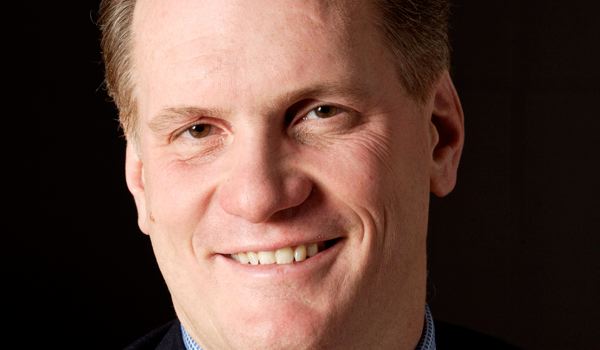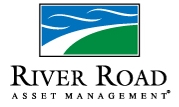Dear friends,
The trees have barely begun to change color here in Iowa. The days are warm, football is in the air (had I mentioned that my son Will had a running touchdown on offense and a nifty interception on defense this week?) and dentists everywhere are gearing up for Halloween. It’s an odd time, then, for investors to be concerned with Santa Claus.

The Quad at Augustana College in early autumn
And yet they are. The broad market indexes are up 2.5% in September (typically a rocky month), 16.2% year-to-date and 30% over the past 12 months. In a normal year, investors would hold their breaths through October and then look with happy anticipation to the arrival of “the Santa Claus rally.” In 80 of the past 100 years, stocks have risen in December, generally by a bit more than 2%.
The question folks are raising this year seems worth pondering: will the intersection of a bull run with a fiscal cliff make for a distinctly Grinchy end of the year? Will even the suspicion of such an outcome make enough folks lighten their stock exposure to trigger a rare year-end market sag?
I don’t know, but the prospect makes me especially grateful for the opportunity to enjoy the company of my students and the fading warmth of the harvest season.
The Last Ten: Fidelity’s New Fund Launches Since 2002
“The Last Ten” will be a monthly series, running between now and February, looking at the strategies and funds launched by the Big Five fund companies (Fido, Vanguard, T Rowe, American and PIMCO) in the last decade. We start this month with Fidelity, the Beantown Behemoth.
There was, at one time, few safer bets than a new Fidelity fund. New Fido funds had two things going from them: (1) Fidelity could afford to buy and support the brightest young managers around and (2) older Fidelity funds might, by happenstance, choose to buy a stock recently purchased by the new fund. The size of those purchases could cause a stock’s price to spike, much to the profit of its early owners. The effect was consistent enough that it became the subject of newsletters and academic studies.
Which leads us to the question: when was the last time that Fidelity launched a compelling fund? You know, one-of-a-kind, innovative, must-have, that sort of thing?
Might it have been New Millenium (FMILX), 20 years ago? If not, what?
Here’s an easier question: when was the last time that Fidelity launched a fund which now carries a five-star rating from Morningstar?
Answer: five years ago, with the launch of Fidelity International Growth (FIGFX) in November of 2007. It’s a fund so low-profile that it doesn’t appear in any of Fidelity’s advertising and is not covered by any of Morningstar’s analysts. The only other five star fund launched by Fido in a decade is an institutional bond index fund, Spartan Intermediate Term Bond Index (FIBIX), December 2005.
That’s not to say that Fidelity hasn’t been launching funds. They have. Hundreds of them. They’re just not very good.
It’s hard to generate an exact count of Fidelity’s new fund launches because some apparently new funds are just older funds being sold through new channels, such as the launch of a Fidelity Advisor fund that’s just a version of an older Fidelity one.
That said, here’s a rough 10 year total. Fidelity has launched 154 new mutual funds in a decade. Those appear as Fidelity, Fidelity Advisor, Fidelity Series and Strategic Adviser funds. Taking the various share classes into account, Fido made 730 new packages available in the decade.
That includes:
26 Fidelity funds for retail investors
18 Fidelity Series funds – which are available for purchase only by other Fidelity funds. The most amazing development there is the imminent launch of new funds for Joel Tillinghast and Will Danoff. Mr. T has brilliantly managed the $35 billion Low Priced Stock (FLPSX) since 1989. He recently completed a sabbatical, during which time the fund was run by a team. The team has been retained as co-managers as part of what Fidelity admits is “succession planning.” He’ll now also manage Intrinsic Opportunities. Will Danoff, who manages the $85 billion Contrafund (FCNTX) and $20 billion Advisor News Insights (FNIAX) funds, is being asked to manage Opportunistic Insights.
20 Strategic Advisers funds (e.g. SMid Cap Multi-manager) – which rely on non-Fidelity managers.
9 Spartan index funds, some of which overlap Series index funds.
58 Fidelity Advisor funds – some (Advisor Small Cap Value) of which are near-duplicates of other Fidelity funds. But, it turns out that a fair number are either unique to the Advisor lineup or are distinct from their Fidelity sibling. The 14 “Income Replacement” series, for example, are distinct to the Advisor line. Will Danoff’s Advisor New Insights fund, for example, is not a clone of Contrafund. Advisor Midcap II A is sort of a free agent. Advisor Value Leaders is bad, but unparalleled.
13 “W” class Freedom Index funds are another distinct adviser-only set, which have the same target dates as the Freedom series but which execute exclusively through index funds.
How good are those funds? They’re definitely “not awful.” Of the 730 new fund packages, 593 have earned Morningstar ratings. Morningstar awards five stars to the top 10% of funds in a group and four stars to the next 22.5%. By sheer coincidence, you’d expect Fido to have fielded 59 new five-star funds. They only have 18. And you’d expect 192 to have four or five star ratings. They managed 118. Which is to say, new Fidelity funds are far less likely to be excellent than either their storied past or pure chance would dictate.
The same pattern emerges if you look at Morningstar’s “gold” rating for funds, their highest accolade. Fidelity has launched nine “Gold” funds in that period – all are either bond funds, or index funds, or bond index funds. None is retail, and none is an actively-managed stock or hybrid fund.
Why the apparent mediocrity of their funds? I suspect three factors are at work. First, Fidelity is in the asset-gathering business now rather than the sheer performance business. The last thing that institutional investors (or even most financial planners) want are high-risk, hard-to-categorize strategies. They want predictable packages of services, and Fidelity is obliged to provide them. Second, Fidelity’s culture has turned cautious. Young managers are learning from early on that “safe is sane.” If that’s the case, they’re not likely to be looking for the cutting edge of anything. The fact that they’re turning to overworked 25-year veterans to handle new in-house funds might be a sign of how inspiring the Fidelity “bench” has become. Third and finally, Fidelity’s too big to pursue interesting projects. It’s hard for any reasonably successful Fidelity fund to stay below a billion in assets, which means that niche strategies and those requiring nimble funds are simply history.
Bottom line: the “Fidelity new-fund effect” seems history, as Fidelity turns more and more to index funds, repackaged products and outside managers. But at least they’re unlikely to be wretched, which brings us to …
The Observer’s Annual “Roll Call of the Wretched”
 It’s the time of year when we pause to enjoy two great German traditions: Oktoberfest and Schadenfreude. While one of my favorites, Leinenkugel’s Oktoberfest, was shut out (Bent River Brewery won first, second and third places at the Quad City’s annual Brew Ha Ha festival), it was a great excuse to celebrate fall on the Mississippi.
It’s the time of year when we pause to enjoy two great German traditions: Oktoberfest and Schadenfreude. While one of my favorites, Leinenkugel’s Oktoberfest, was shut out (Bent River Brewery won first, second and third places at the Quad City’s annual Brew Ha Ha festival), it was a great excuse to celebrate fall on the Mississippi.
And a glass of Bent River’s Mississippi Blonde might be just what you need to enjoy the Observer’s annual review of the industry’s Most Regrettable funds. Just as last year, we looked at funds that have finished in the bottom one-fourth of their peer groups for the year so far. And for the preceding 12 months, three years, five years and ten years. These aren’t merely “below average.” They’re so far below average they can hardly see “mediocre” from where they are.
When we ran the screen in October 2011, there are 151 consistently awful funds, the median size for which is $70 million. In 2012 there were . . . 151 consistently awful funds, the median size for which is $77 million.
Since managers love to brag about the consistency of their performance, here are the most consistently awful funds that have over a billion in assets. Funds repeating from last year are flagged in red.
| Morningstar Category |
Total Assets |
|
| BBH Broad Market | Intermediate Bond |
2,900 |
| Bernstein International | Foreign Large Blend |
1,497 |
| Bernstein Tax-Managed Intl | Foreign Large Blend |
3,456 |
| CRA Qualified Investment CRA | Intermediate Bond |
1,488 |
| DFA Two-Year Global Fixed-Income | World Bond |
4,665 |
| Eaton Vance Strategic Income B | Multisector Bond |
2,932 |
| Federated Municipal Ultrashort | Muni National Short |
4,022 |
| Hussman Strategic Growth | Long/Short Equity |
3,930 |
| Invesco Constellation A | Large Growth |
2,515 |
| Invesco Global Core Equity A | World Stock |
1,279 |
| Oppenheimer Flexible Strategies | Moderate Allocation |
1,030 |
| Pioneer Mid-Cap Value A | Mid-Cap Value |
1,106 |
| Thornburg Value A | Large Blend |
2,083 |
| Vanguard Precious Metals and M | Equity Precious Metals |
3,042 |
| Wells Fargo Advantage S/T Hi-Y | High Yield Bond |
1,102 |
|
37,047 |
Of these 13, two (DFA and Wells) deserve a pass because they’re very much unlike their peer group. The others are just billions of bad.
What about funds that didn’t repeat from last year’s list? Funds that moved off the list:
- Liquidated – the case of Vanguard Asset Allocation.
- Fired or demoted the manager and are seeing at least a short term performance bump – Fidelity Advisor Stock Selector Mid Cap (FMCBX ), Fidelity Magellan (FMAGX), Hartford US Government Securities (HAUSX), and Vantagepoint Growth (VPGRX) are examples.
- They got lucky. Legg Mason Opportunity “C”, for example, has less than a billion left in it and is doing great in 2012, while still dragging a 100th percentile ranking for the past three and five years. Putnam Diversified Income (PINDX) is being buoyed by strong performance in 2009 but most of 2011 and 2012 have been the same old, sad story for the fund.
The most enjoyable aspect of the list is realizing that you don’t own any of these dogs – and that hundreds of thousands of poor saps are in them because of the considered advice of training financial professionals (remember: 11 of the 13 are loaded funds, which means you’re paying a professional to place you in these horrors).
Just When You Thought It Couldn’t Get Any Worse
I then refined the search with the Observer’s “insult to injury” criteria: funds that combined wretched performance with above-average to high risk and above average fees. The good news: not many people trust Suresh Bhirud with their money. His Apex Mid Cap Growth (BMCGX) had, at last record, $192,546 – $100,000 below last year’s level. Two-thirds of that amount is Mr. Bhirud’s personal investment. Mr. Bhirud has managed the fund since its inception in 1992 and, with annualized losses of 9.2% over the past 15 years, has mostly impoverished himself.
Likewise, with Prasad Growth (PRGRX) whose performance graph looks like this:

The complete Roll Call of Wretched:
| Morningstar Category |
Total Assets |
|
| AllianceBern Global Value A | World Stock | 44 |
| Apex Mid Cap Growth | Small Growth | <1 |
| API Efficient Frontier Value | Mid-Cap Blend | 22 |
| CornerCap Balanced | Moderate Allocation | 18 |
| Eaton Vance AMT-Free Ltd Maturity | Muni National Interm | 67 |
| Eaton Vance CT Municipal Income | Muni Single State Long | 120 |
| Eaton Vance KY Municipal Income | Muni Single State Long | 55 |
| Eaton Vance NY Ltd Maturity Muni | Muni New York Intermediate | 91 |
| Eaton Vance TN Municipal Income | Muni Single State Long | 53 |
| Legg Mason WA Global Inflation | Inflation-Protected Bond | 41 |
| Litman Gregory Masters Value | Large Blend | 81 |
| Midas | Equity Precious Metals | 55 |
| Pacific Advisors Mid Cap Value | Mid-Cap Blend | 5 |
| Pioneer Emerging Markets A | Diversified Emerging Mkts | 316 |
| Prasad Growth | World Stock | <1 |
| ProFunds Precious Metals Ultra | Equity Precious Metals | 51 |
| ProFunds Semiconductor UltraSe | Technology | 4 |
| Pyxis Government Securities B | Intermediate Government | 83 |
| Rochdale Large Value | Large Blend | 20 |
| SunAmerica Focused Small-Cap Value | Small Blend | 101 |
| SunAmerica Intl Div Strat A | Foreign Large Blend | 70 |
| SunAmerica US Govt Securities | Intermediate Government | 137 |
| Tanaka Growth | Mid-Cap Growth | 11 |
| Thornburg Value A | Large Blend | 2,083 |
| Timothy Plan Strategic Growth | Aggressive Allocation | 39 |
| Turner Concentrated Growth Investor | Large Growth | 35 |
| Wilmington Large Cap Growth A | Large Growth | 89 |
| 3,691 |
I have a world of respect for the good folks at Morningstar. And yet I sometimes wonder if they aren’t being a bit generous with funds they’ve covered for a really long time. The list above represents funds which, absent wholesale changes, should receive zero – no – not any – zilch investor dollars. They couple bad performance, high risk and high expenses.
And yet:
Thornburg Value (a “Bronze” fund): “This fund’s modified management team deserves more time.” What? The former lead manager retired in 2009. The current managers have been on-board since 2006. The fund has managed to finish in the bottom 1 – 10% of its peers every year since. Why do they deserve more time?
Litman Gregory Masters Value: “This fund’s potential is stronger than its long-term returns suggest.” What does that mean? For every trailing time period, it trails more or less 90% of its peers. Is the argument, “hey, this could easily become a bottom 85th percentile fund”?
Two words: run away! Two happier words: “drink beer!”
Chip, the Observer’s technical director, deserves a special word of thanks for her research and analysis on this piece. Thanks, Chip!
RPHYX Conference Call
 For about an hour on September 13th, David Sherman of Cohanzick Management, LLC, manager of RiverPark Short Term High Yield (RPHYX) fielded questions from Observer readers about his fund’s strategy and its risk-return profile. Somewhere between 40-50 people signed up for the RiverPark call but only about two-thirds of them signed-in. For the benefit of folks interested in hearing David’s discussion of the fund, here’s a link to an mp3 version of Thursday night’s conference call. The RiverPark folks guess it will take between 10-30 seconds to load, depending on your connection. At least on my system it loads in the same window that I’m using for my browser, so you might want to right-click and choose the “open in a new tab” option.
For about an hour on September 13th, David Sherman of Cohanzick Management, LLC, manager of RiverPark Short Term High Yield (RPHYX) fielded questions from Observer readers about his fund’s strategy and its risk-return profile. Somewhere between 40-50 people signed up for the RiverPark call but only about two-thirds of them signed-in. For the benefit of folks interested in hearing David’s discussion of the fund, here’s a link to an mp3 version of Thursday night’s conference call. The RiverPark folks guess it will take between 10-30 seconds to load, depending on your connection. At least on my system it loads in the same window that I’m using for my browser, so you might want to right-click and choose the “open in a new tab” option.
http://78449.choruscall.com/riverpark/riverpark120913.mp3
When you click on the link, the file will load in your browser and will begin playing after it’s partially loaded.
The conference call was a success for all involved. Once I work out the economics, I’d like to offer folks the opportunity for a second moderated conference call in November and perhaps in alternate months thereafter. Let me know what you think.
Observer Fund Profiles:
Each month the Observer provides in-depth profiles of between two and four funds. Our “Most Intriguing New Funds” are funds launched within the past couple years that most frequently feature experienced managers leading innovative newer funds. “Stars in the Shadows” are older funds that have attracted far less attention than they deserve. This month’s lineup features
RiverPark Short Term High Yield (RPHYX): RPHYX has performed splendidly since inception, delivering what it promises, a cash management fund capable of generating 300 basis points more than a money market with minimal volatility. This is an update of our September 2011 profile.
T. Rowe Price Real Assets (PRAFX): a Clark-Kentish sort of fund. One moment quiet, unassuming, competent then – when inflation roars – it steps into a nearby phone booth and emerges as . . .
Funds in Registration
New mutual funds must be registered with the Securities and Exchange Commission before they can be offered for sale to the public. The SEC has a 75-day window during which to call for revisions of a prospectus; fund companies sometimes use that same time to tweak a fund’s fee structure or operating details. Every day we scour new SEC filings to see what opportunities might be about to present themselves. Many of the proposed funds offer nothing new, distinctive or interesting. Some are downright horrors of Dilbertesque babble.
Each month, though, there are interesting new no-load retail funds and, more recently, actively managed ETFs. This month’s funds are due to be launched before the end of 2012. Two, in particular, caught our attention:
Buffalo Dividend Focus Fund will try to generate “current income” as its primary goal, through reliance on dividends. That’s a rare move and might reflect some pessimism about the prospects of using bonds for that goal. GMO, for example, projects negative real returns for bonds over the next 5-7 years. It’s particularly interesting that John Kornitzer will run the fund. John has done a really solid job with Buffalo Flexible Income (BUFBX) over the years and is Buffalo’s founder.
RiverNorth/Oaktree High Income Fund is the latest collaboration between RiverNorth and another first-tier specialist. RiverNorth’s unmatched strength is in using an asset allocation strategy that benefits from their ability to add arbitrage gains from pricing inefficiencies in closed-end funds. They’re partnering with Oaktree Capital Management, which is best known in the mutual fund world for its find work on Vanguard Convertible Securities (VCVSX). Oaktree’s principals have been working together since the mid-1980s on “high yield bonds, convertible securities, distressed debt and principal investments.” They’re managing $78 billion of institutional and private money for folks on four continents. Their founder, Howard Marks, still writes frequent shareholder letters (a la Jeremy Grantham) which are thoughtful and well-argued (despite the annoying watermark splashed across each page).
Details on these funds and the list of all of the funds in registration are available at the Observer’s Funds in Registration page or by clicking “Funds” on the menu atop each page.
On a related note, we also tracked down 40 fund manager changes, down from last month’s bloodbath in which 70 funds changed management.
WhiteBox, Still in the Box
A number of readers have urged me to look into Whitebox Tactical Opportunities (WBMAX), and I agreed to do a bit of poking around.
There are some funds, and some management teams, that I find immediately compelling. Others not.
So far, this is a “not.”
Here’s the argument in favor of Whitebox: they have a Multi-Strategy hedge fund which uses some of the same strategies and which, per a vaguely fawning article in Barron’s, returned 15% annually over the past decade while the S&P returned 5%. I’ll note that the hedge fund’s record does not get reported in the mutual funds, which the SEC allows when it believes that the mutual fund replicates the hedge. And, too, the graphics on their website are way cool.
Here’s the reservation: their writing makes them sound arrogant and obscure. They advertise “a proprietary, multi-factor quantitative model to identify dislocations within and between equity and credit markets.” At base, they’re looking for irrational price drops. They also use broad investment themes (they like US blue chips, large cap financials and natural gas producers), are short both the Russell 2000 (which is up 14.2% through 9/28) and individual small cap stocks, and declare that “the dominant theories about how markets behave and the sources of investment success are untrue.” They don’t believe in the efficient market hypothesis (join the club).
After nine months, the fund is doing well (up 13% through 9/28) though it’s trailed its peers in about a third of those months.
I’ll try to learn more in the month ahead, but I’ll first need to overcome a vague distaste.
Briefly Noted . . .
RiverPark/Wedgewood Fund (RWGFX) continues to rock. It’s in the top 2% of all large-growth funds for the past 12 months and has attracted $450 million in assets. Manager David Rolfe recently shared two analyses of the fund’s recent performance. Based on Lipper data, it’s the fourth-best performing large growth fund over the past year. Morningstar data placed it in the top 30 for the past three months. The fund was also featured in a Forbes article, “Investors will starve on growth stocks alone.” David is on the short-list of managers who we’d like to draw into a conference call with our readers. A new Observer profile of the fund is scheduled for November.
Small Wins for Investors
As we noted last month, on Sept. 4, Aston Funds reopened ASTON/River Road Independent Value (ARIVX) to new investors after reallocating capacity to the mutual fund from the strategy’s separate accounts. The firm still intends to close the entire strategy at roughly $1 billion in assets, which should help preserve manager Eric Cinnamond’s ability to navigate the small-cap market.
In a “look before you leap” development, Sentinel Small Company Fund (SAGWX) reopened to new investors on September 17, 2012. Except for the fact that the fund’s entire management team resigned six weeks earlier, that would be solidly good news.
Brown Capital Management Small Company (BCSIX) reopened on Sept. 4, 2012. Morningstar considers this one of the crème de la crème of small growth funds, with both five stars and a “Gold” rating. It remained closed for less than one year.
CLOSINGS
Loomis Sayles Small Cap Growth (LCGRX) closed to new investors on Sept. 4, 2012.
AQR Risk Parity (AQRNX) will close to new investors on November 16. If you’ve got somewhere between $1 million and $5 million sitting around, unallocated, in your risk-parity investment pot, you might consider this high-minimum fund.
OLD WINE, NEW BOTTLES
American Century Inflation Protection Bond (APOAX) is now American Century Short Duration Inflation Protection Bond, which follows a strategy change that has the fund focusing on, well, short duration bonds.
The former BNY Mellon Mid Cap Stock Fund is now BNY Mellon Mid Cap Multi-Strategy Fund and its portfolio has been divided among several outside managers.
Federated Asset Allocation (FSTBX) will become Federated Global Allocation in December. It will also be required to invest at least 30% outside the US, about 10% is non-US currently. The fund’s bigger problem seem more related to a high turnover, high risk strategy than to a lack of exposure to the Eurozone.
Virtus Global Infrastructure (PGUAX) changed its name to Virtus Global Dividend (PGUAX) on September 28, 2012.
That same day, Loomis Sayles Absolute Strategies (LABAX) became Loomis Sayles Strategic Alpha Fund. Loomis had been sued by the advisors to the Absolute Strategies Fund (ASFAX), who thought Loomis might be trading on their good name and reputation. While admitting nothing, Loomis agreed to a change.
OFF TO THE DUSTBIN OF HISTORY
Columbia has merged too many funds to list – 18 in the latest round and 67 since its merger with RiverSource. Okay, fine, here’s the list:
- Connecticut Tax-Exempt Fund
- Diversified Bond Fund
- Emerging Markets Opportunity Fund
- Frontier Fund
- Government Money Market Fund
- High Yield Opportunity Fund
- Large Cap Value Fund
- LifeGoal Income Portfolio
- Massachusetts Tax-Exempt Fund
- Mid Cap Growth Opportunity Fund
- Multi-Advisor International Value Fund
- Portfolio Builder Moderate Aggressive Fund
- Portfolio Builder Moderate Conservative Fund
- Select Small Cap Fund
- Small Cap Growth Fund II
- Variable Portfolio – High Income Fund
- Variable Portfolio – Mid Cap Growth Fund
- Variable Portfolio – Money Market Fund
Dreyfus/Standish International Fixed Income Fund is slated to merge into Dreyfus/Standish Global Fixed Income Fund (DHGAX).
In an exceedingly rare move, Fidelity is moving to close three funds with an eye to liquidating them. The Dead Funds Walking are Fidelity Fifty (FFTYX), Fidelity Tax Managed Stock (FTXMX) and Fidelity 130/30 Large Cap (FOTTX). The largest is Fifty, with nearly $700 million in assets. Morningstar’s Janet Yang expressed her faith in Fifty’s manager and opined in April that this was a “persuasive option for investors.” Apparently Fidelity was not persuaded. The other two funds, both undistinguished one-star laggards, had about $100 million between them.
Janus Worldwide (JAWWX) is being merged into Janus Global Research (JARFX) at the start of 2013. That seems like an almost epochal change: JAWWX was once a platform for displaying the sheer brilliance of its lead manager (Helen Young Hayes), then things crumbled. Returns cratered, Hayes retired, assets dropped by 90% and now it’s being sucked into a fund run by Janus’s analyst team.
According to her LinkedIn page, Ms. Hayes is now an Advisor at Red Rocks Capital, LLC (their site doesn’t mention her), Director at HEAF (a non-profit) and Advisor at Q Advisors, LLC (but only in the “advisory” sense, she’s not one of the actual Q Advisors).
Although it’s not mentioned on his LinkedIn page, George Maris – who managed JAWWX to a 5% loss during his tenure while his peers booked a 2% gain – will continue to manage Janus Global Select (JORNX), a desultory fund that he took over in August.
Chuck Jaffe used the Janus closing as a jumping-off point for a broader story about the excuses we make to justify keeping wretched funds. Chuck does a nice job of categorizing and debunking our rationalizations. It’s worth reading.
A bunch of small Pyxis funds have vanished: Short-Term Government (HSJAX) and Government Securities (HGPBX) were both absorbed by Pyxis Fixed Income (HFBAX) which, itself, has a long-term losing record. International Equity (HIQAX) merged into Pyxis Global Equity (HGMAX), and U.S. Equity (HUEAX) into Pyxis Core America Equity (HCOAX). All of those funds, save Core America, have very weak long-term records.
Triex Tactical Long/Short Fund (TLSNX) closed on September 4, moved to cash and liquidated on September 27. Not sure what to say. It has just $2 million in assets, but it’s less than a year old and has substantially above-average performance (as of early September) relative to its “multialternative” peer group.
Turner Concentrated Growth Fund (yep – that stalwart from the “Roll Call of the Wretched,” above) is being merged into Turner Large Growth Fund (TCGFX).
In Closing . . .
For users of our discussion board, we’re pleased to announce the creation of a comprehensive Users Guide. As with many of our resources, it’s a gift to the community from one of the members of the community. In this case, Old Joe, who has many years of experience in technical writing, spent the better part of a month crafting the Guide even as chip and Accipiter kept tweaking the software and forcing rewrites. OJ’s Guide is clear, visually engaging and starts with a sort of Quick Start section for casual users then an advanced section for folks who want to use the wealth of features that aren’t always immediately observable.
For which chip, Accipiter and I all say “thanks, big guy! You did good.”
Since launch, the Observer has been read by 99,862 people and our monthly readership is pretty steadily around 8500. Thanks to you all for your trust and for the insights you’ve shared. Here’s the obligatory reminder: please do consider using (and sharing) the Observer’s link to Amazon.com. While it’s easy to make a direct contribution to the Observer, only two or three folks have been doing so in recent months (thanks Gary, glad we could help! And thanks Carl, you’re an ace!) which makes the Amazon program really important.
We’ll look for you in November. Find a nice harvest festival and enjoy some apples for us!




 Aston/River Road Independent Value (ARIVX) is an exceptionally good young fund from Eric Cinnamond, a manager who has a great 16 year record as a small cap, absolute return investor. The fund opened in December 2010, we profiled it with some enthusiasm in February 2011. The fund quickly established its bona fides, drew a lot of assets and, in a move of singular prudence, was closed while still small and maneuverable.
Aston/River Road Independent Value (ARIVX) is an exceptionally good young fund from Eric Cinnamond, a manager who has a great 16 year record as a small cap, absolute return investor. The fund opened in December 2010, we profiled it with some enthusiasm in February 2011. The fund quickly established its bona fides, drew a lot of assets and, in a move of singular prudence, was closed while still small and maneuverable.

 For someone professing great economic knowledge, Paul Ryan’s portfolio reflects the careful discipline of a teenager at the mall. That, at least, is one reading of his
For someone professing great economic knowledge, Paul Ryan’s portfolio reflects the careful discipline of a teenager at the mall. That, at least, is one reading of his 